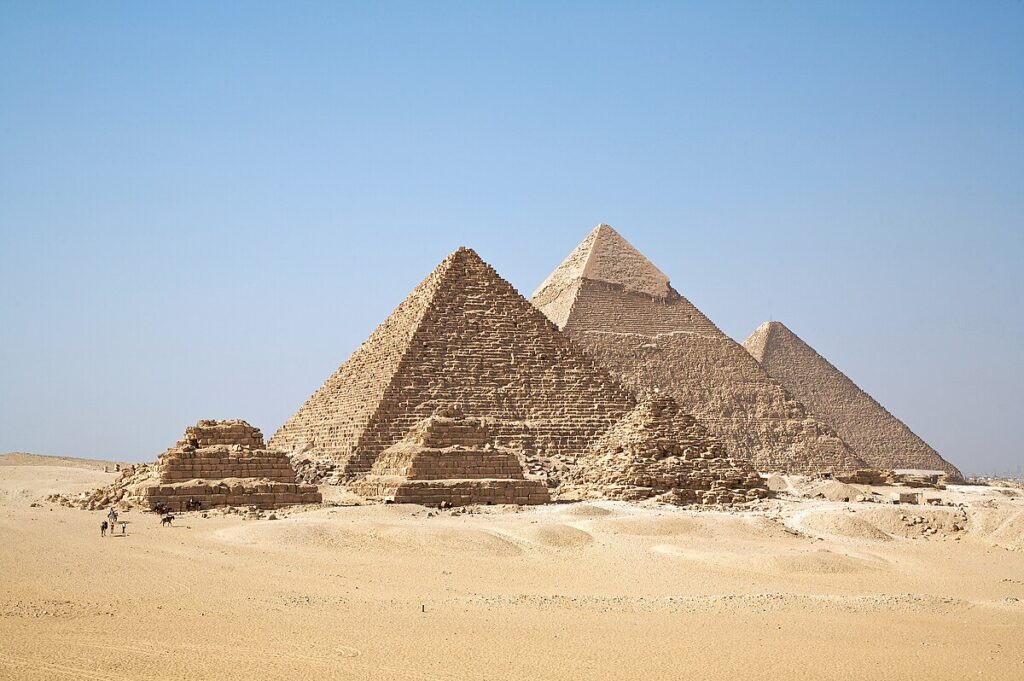Some structures are more than just feats of engineering—they’re masterpieces that defy time, logic, and imagination. From the towering pyramids of Giza, built with ancient precision that still puzzles historians, to the breathtaking beauty of the Taj Mahal, these man-made wonders stand as testaments to human ambition and artistry. Then there’s Angkor Wat, a sprawling temple complex hidden in the Cambodian jungle, its intricate carvings telling stories from a lost empire. These structures boggle the mind not just for their scale and beauty, but for the mystery and ingenuity behind their creation. Step into the past and marvel at the wonders that continue to captivate the world.
Angkor Wat in Cambodia Continues to Capture Hearts With Its Timeless Splendor

Covering over 400 acres, Angkor Wat is the largest religious complex in the world. The temple’s design is supposed to look like Mount Meru, the home of the Hindu gods, and many of the towers are precisely positioned to align with the solstice at sunrise. The walls and moat symbolize the surrounding mountain ranges and ocean, while the towers represent the mountain peaks. Workers used about 7.5 million sandstone blocks weighing about 1.5 tons each to build the five original towers. They covered almost every surface, including the roof, with carvings based on Indian literature. King Suryavarman II had workers start constructing this sandstone complex near Angkor, Cambodia, during the 12th century as a Hindu temple dedicated to the god Vishnu. A Hindu religious leader named Divākarapaṇḍita urged King Suryavarman II to have the structure constructed. While debatable, the complex may have been the king’s funerary temple. Starting in 1177, after the Chams gained control of the area, Angkor Wat was converted to a Buddhist temple in honor of King Jayavarman VII’s wife.
Italy’s Iconic Colosseum Is a Gladiatorial Marvel That Stands Proud
Despite construction starting in 70 AD, the Colosseum in Rome is the largest amphitheater ever built . Emperor Vespasian ordered workers to begin building the limestone, volcanic rock and brick-faced concrete amphitheater, and it took them over 10 years to finish. Experts generally assume that many of those workers were Jewish prisoners of war who officials returned to the city following the First Jewish–Roman War. Workers constructed the outer walls of the Colosseum of about 3.5 million cubic feet of stone held together by 300 tons of iron clamps. Initially, the Colosseum had a retractable awning that people could position to provide shade and a breeze for spectators. The Colosseum had 80 entrances so that spectators could quickly enter and leave the facility. Seating in the elliptical Colosseum was by class. The king and Vestal Virgins were seated on the north and south ends, so they got the best views, while senators were seated along the sides. Above them, the non-senatorial noble class or knights were seated while ordinary citizens were seated above them.
The Giza Pyramids

Archeologists have found more than 115 Egyptian pyramids. They believe workers constructed the first of these pyramids about 2630 BC. Many of the stones used to build the pyramids came from local bedrock. Experts suggest that the sand was wetted so that less friction was created, and the blocks were pulled to the site on wooden sleds. Some pyramids contain materials that workers transported on the Nile. Historians believe the people thought the pharaohs would use the pyramid shape as a staircase to get direct access to heaven. Many pyramids look like a pile of rubble, but some are considered more important than others. Of these pyramids, the tallest, besides the Great Pyramid of Giza, is the pyramid of Khafre, standing 448 feet tall. Workers constructed it about 2500 BC. They may have used stones removed while building this pyramid to create the body of the Great Sphinx of Giza.
India’s Taj Mahal

The Taj Mahal on Yamuna River’s shore in Agra, Uttar Pradesh, India, was commissioned by Mughal Emperor Shah Jahan to house the tomb of his wife, Mumtaz Mahal, who died in 1631 while giving birth to the couple’s 14th child. Architect Ustad Ahmad Lahori led a crew of 20,000 workers to construct the main building in 1643 but work on surrounding buildings continued until about 1653. The main building’s onion dome, which stands 115 feet tall, makes this one of the most recognizable sites in the world. The outside of the building contains marvelous examples of Mughal architecture created by artists using paint, stones and stucco. Its interior has many examples of lapidary made with precious and semi-precious gemstones. Sixteen sunken gardens surround the main building, with gardeners labeling most plants with their scientific names. Red sandstone walls enclose the main complex on three sides, with smaller mausoleums containing the emperor’s other wives and his favorite servant near the walls.
The Chicken Church of Java

In the heart of the Indonesian jungle, the Chicken Church of Java rises like a peculiar dream. Built in the 1990s by Daniel Alamsjah, this bird-shaped structure was intended as a place of worship for all religions. Financial difficulties and local resistance left the building unfinished, and the surrounding jungle eventually overtook it. Today, the Chicken Church is a bizarre yet captivating sight, with its cloud-painted ceilings and mosaic-tiled walls adding to its otherworldly allure.

